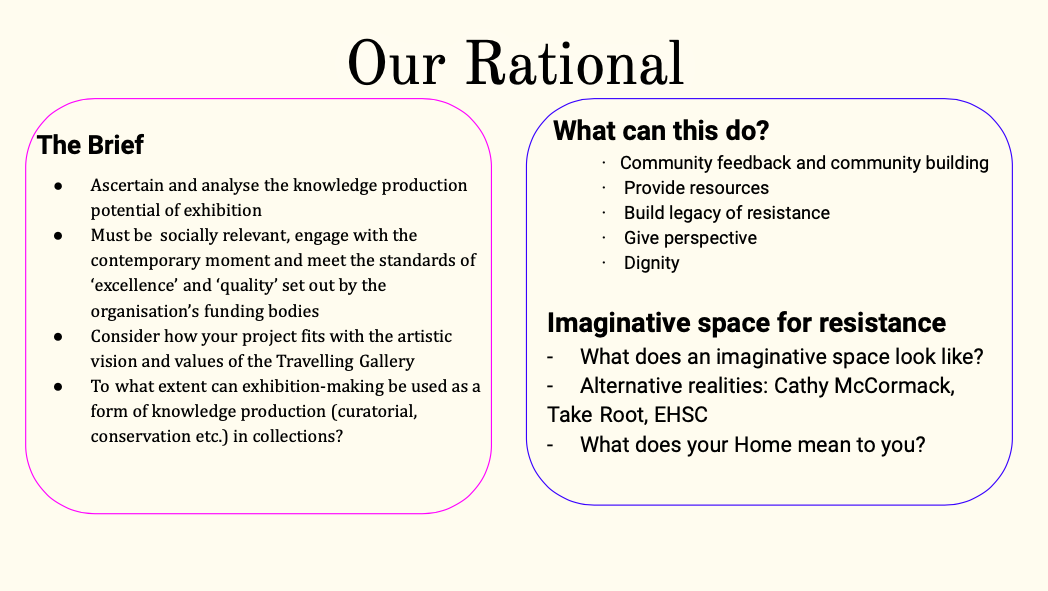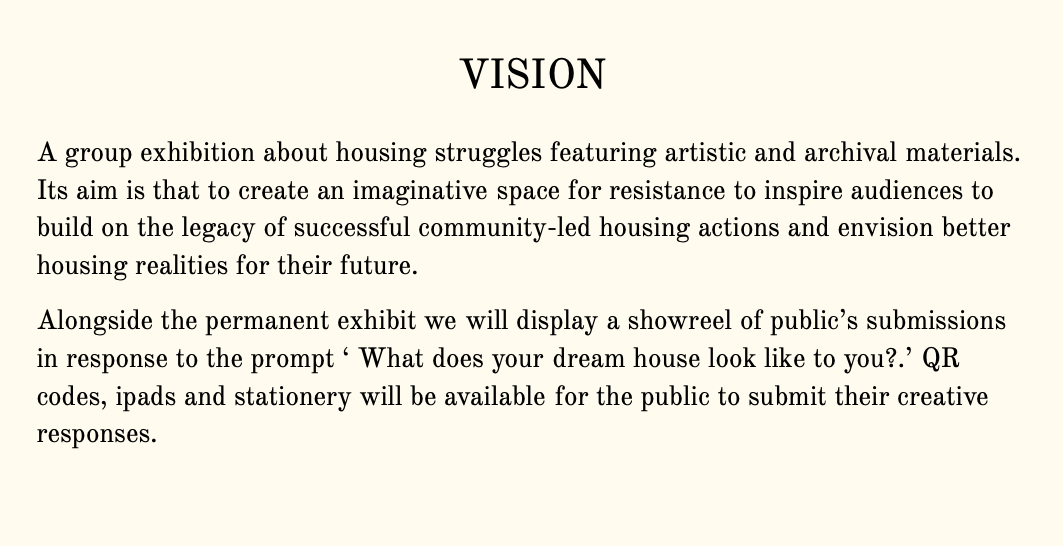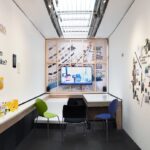CRC curators and Kirsten Lloyd’s feedback highlighted that we needed a stronger thematic focus and that some of our design ideas were crossing the boundaries of our curatorial roles into the realm of artist practices.
We have come together to reflect on the question: ‘What can this exhibition do?’
The key idea that emerged from this meeting was that the show could offer an ‘imaginative space of resistance’ for our audience. Activist Walidah Imarisha wrote ‘We can’t build what we can imagine.’ Therefore, we envision creating an exhibition as a dedicated space of exchange and reflection to support visitors to imagine alternative housing realities built around their needs.
There are two main aspects of this imaginative space both connected to the framework of the Living Archive (Sabiescu, 2020).
Firstly, we will display archival materials to showcase past examples of community organising for better housing from the different locations that the Travelling Gallery will visit. Through these archival materials, we hope to track a legacy of resistance linking past and present communities’ efforts and revive knowledge about local housing struggles. This approach aims to acknowledge our biases and avoid a patronising attitude as local communities are presented as experts in the battle for fairer housing. The archival materials will include campaigns for basic housing rights, as well as models of alternative housing realities altogether like the self-built women’s group Take Root.

Secondly, the Living Archive submissions will contribute to this imaginative space of resistance as we will ask our audience: ‘What does your dream home look like?’ We hope this question will create a dedicated space for visitors to reflect both on their necessities and aspirations to imagine a housing system tailored to their needs.








